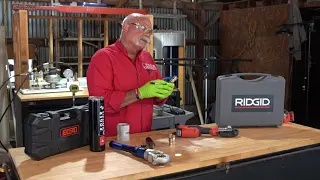Cutting open a used water heater can reveal a surprising (and often alarming) buildup of sediment inside. Over time, minerals like calcium and magnesium settle at the bottom, forming a thick layer that affects both efficiency and lifespan. Below, we’ll look at what’s inside a water heater that’s been sitting for a decade, why sediment accumulates, and how a simple yearly flush helps prevent these problems.
Why Sediment Builds Up
Most tap water contains dissolved minerals, including calcium and magnesium. When the water is heated, these minerals precipitate out and collect at the bottom. Over the years, this layer can thicken to the point where it insulates the heating surface, forcing the burner (in a gas heater) or the elements (in an electric heater) to work harder to heat the water.
How Sediment Affects Efficiency and Lifespan
- The burner or elements must heat the mineral layer before the water above it can warm up, increasing energy usage.
- The tank’s metal walls and components may corrode more quickly, especially if the anode rod is consumed.
- Water heater capacity effectively shrinks because sediment takes up space meant for hot water.
Importance of Flushing
A regular flush (once a year) helps remove loose sediment before it has a chance to cake into a thick layer. Simply attach a garden hose to the drain valve at the bottom of the heater and run water out until it clears. Doing so ensures that minerals don’t accumulate in large amounts, letting your system run more smoothly for a longer period.
What’s Inside a Typical Old Water Heater
- Dip Tube: Directs incoming cold water to the bottom of the tank. It may show signs of wear but often remains intact.
- Anode Rod: A sacrificial rod that helps protect the tank lining by attracting corrosive elements. Over time, the rod becomes heavily corroded or partially dissolved.
- Heavy Sediment: This can range from a light dusting of mineral flakes to an inch or more of thick sludge, depending on water quality and maintenance history.
Tips to Extend Water Heater Life
- Flush Annually
Even if you have moderate mineral content in your water, a yearly flush is an easy step to reduce buildup. - Check the Anode Rod
Inspect it every couple of years. If it’s significantly eroded, replace it before tank corrosion sets in. - Consider Whole-House Filtration or Softening
In areas with very hard water, a water softener or filtration system can reduce the mineral load, slowing down sediment accumulation. - Monitor Temperature Settings
Excessive heat increases mineral precipitation. Keeping the thermostat around 120–130°F can mitigate scale formation.
Conclusion
A water heater sitting for a decade without maintenance can harbor a surprising amount of mineral sediment at its base. Flushing the heater annually goes a long way toward preserving efficiency, reducing energy bills, and extending the unit’s life. If you’re noticing strange noises, slow recovery times, or unusually high utility costs, it may be time for a simple flush—or, if the tank is already old, an upgrade to a new, more efficient model.




